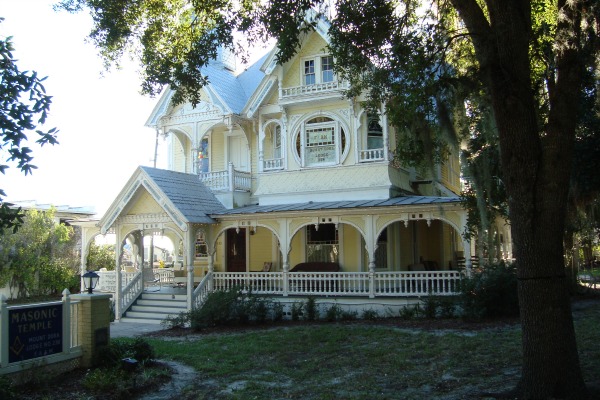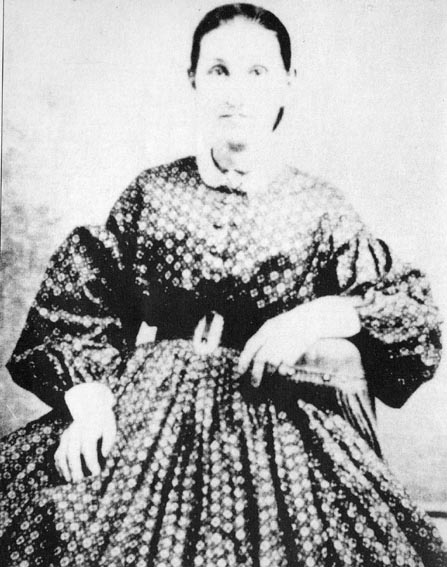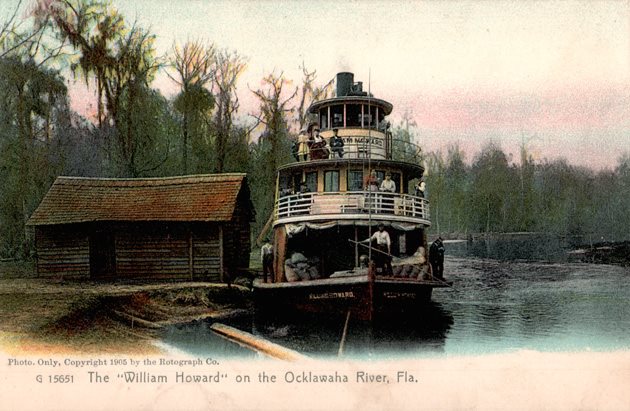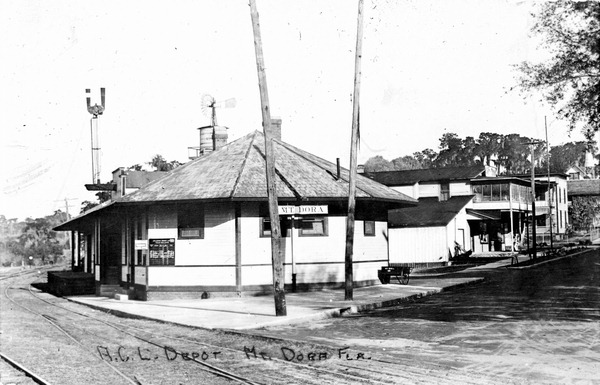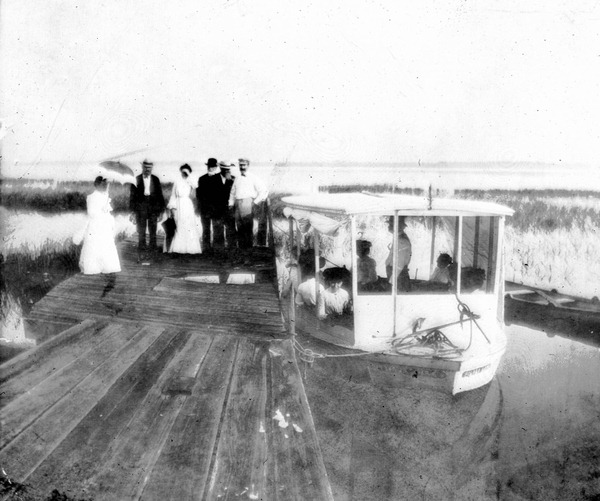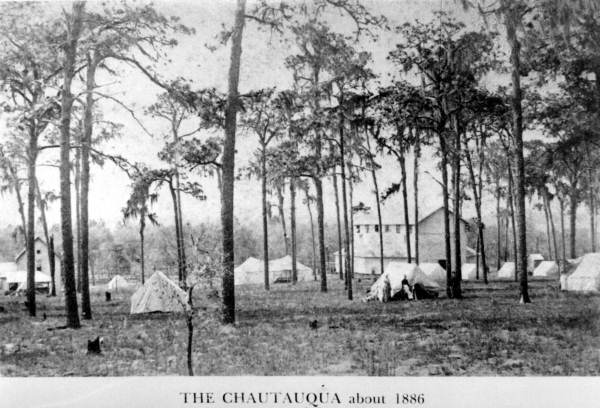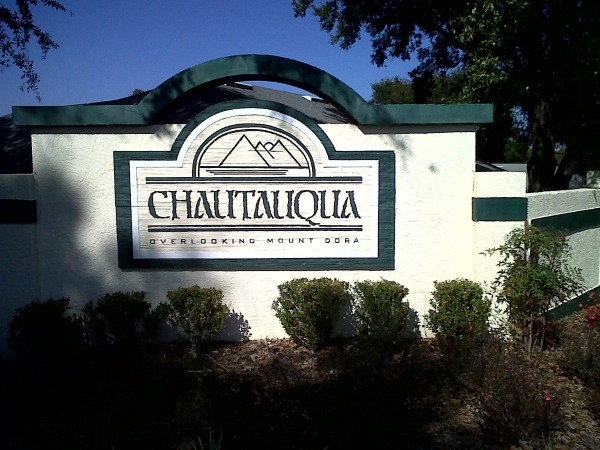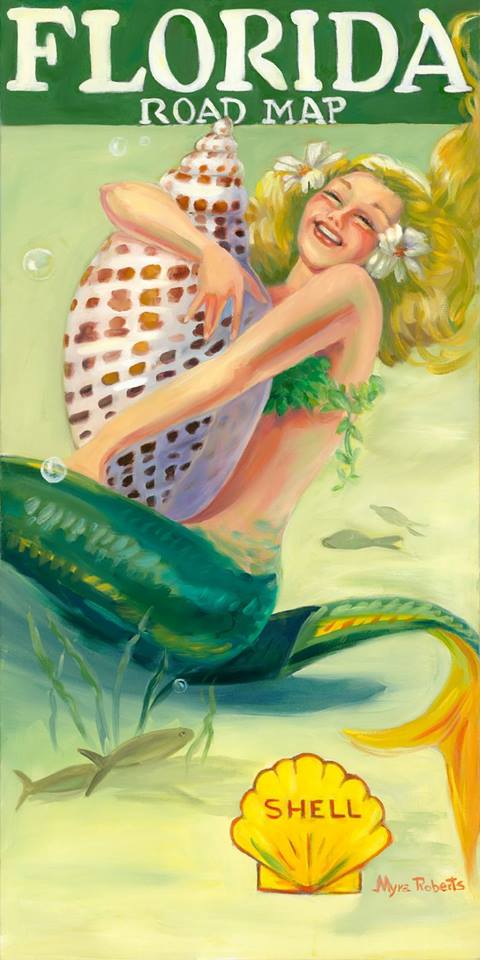- Home
- Florida Towns
- Mount Dora
- History of Mount Dora
HISTORY OF MOUNT DORA, FLORIDA
By Mike Miller Updated October 26, 2021
This history of the area which was to become Mount Dora began in 1846 when Lake Dora was shown on an early survey by the government.
Years later, the birth of Mount Dora began with the homestead of Annie E. Stone in 1878. The platting and subdividing of her property over the years created the City of Mount Dora.
A legend began that it was named for Dora Ann Drawdy, a pioneer who settled with her husband about 2 miles south.
It turns out the legend is not true because Dora came along after the lake had been named.
Here are some of the things that happened since then.
Mount Dora History Timeline
1846 Lake Dora is shown on a government survey, long before Dora Ann Drawdy homesteaded in the area.
1874 David M. Simpson, wife and 2 kids were the first to homestead in what is the Mount Dora area.
1878 Annie McDonald Stone filed on her homestead. Property was deeded to her in 1883, after required 5 year residency.
1880 Original name was Royellou, after three kids of Postmaster R.C. Tremain: Roy, Ella and Louis.
1881 John Donnelly marries Annie McDonald Stone.
1882 The first school in Mount Dora was established.
1883 The town was renamed Mount Dora and was on the land of Annie McDonald Stone.
1886 Mount Dora's first newspaper was published.
1886 Chautauqua Assembly comes to Mount Dora
1887 The first railroad service through Mount Dora began.
1893 The Donnelly House was built.
1910 The town of Mount Dora was incorporated.
1915 The railroad depot was built.
1924 Donnelly Park was created in the center of the city on land obtained from J.P. Donnelly.
1930 President Calvin Coolidge and his wife spent February at the Lakeside Inn.
1956 Locals convince State of Florida to route US-441 around Mount Dora.
1959 Pat Frank publishes apocalyptic novel Alas Babylon that takes place in a fictional town resembling Mount Dora.
1960 Some prominent citizens build the Catacombs, the nickname for an elaborate bomb shelter on Morningside Drive.
1979 Parts of the comedy movie Honky Tonk Freeway are filmed in Mount Dora and the town is painted pink.
Some Details of Mount Dora History Timeline
In 1880, Ross Tremain became the first postmaster, and the community was named "Royellou" after his three children, Roy, Ella and Louis.
Some of his descendants are still prominent in the town.
In 1883, The Alexander House opened, a 2 story hotel with 10 rooms, and the community was renamed "Mount Dora".
It was named after Lake Dora, which had been named by surveyors in 1846.
A legend began that the Lake was named for Dora Ann Drawdy, an early settler, but the lake was actually named years before Dora Ann came to the area.
Dora is memorialized today in the name of Dora Drawdy Way, a cute little gentrified downtown alley.
The history of Mount Dora is kept alive throughout the town in the names of streets and buildings.
The John P. Donnelly House, a Queen Anne style landmark built in 1893 by the first mayor, was listed on the National Register of Historic Places in 1975.
It is a popular photo-op for visitors to Mount Dora, Florida. It is shown in the photo above. It serves today as the local Masonic Lodge.
The railroad came to town in 1887, and it immediately sparked the economy. Many northern tourists discovered Mount Dora, Florida and it became a popular winter retreat for hunting, fishing and boating.
The history of Mount Dora included many steamers coming up the Harris chain of lakes from Jacksonville by way of the Ocklawaha River.
The Alexander House was renamed The Lake House in 1893. In 1903 it was renamed again, this time the Lakeside Inn. It is still in operation today.
It is now the oldest continuously operated hotel in Florida, and is on the National Register of Historic Places.
Guests have included President Calvin Coolidge, Thomas Edison, Henry Ford and President Dwight D. Eisenhower.
Mount Dora, Florida was incorporated in 1910, and the railroad depot was built in 1915.
Citrus was the early industry in Mount Dora, with packing houses going back to 1891.
Most of the groves were destroyed by the great freezes of 1894 and 1895, but many of them were replanted and thrived.
Other sites on the National Register of Historic Places in addition to the Lakeside Inn include the old Atlantic Coast Line Railroad Depot that today is headquarters for the local chamber of commerce.
The photo above is courtesy of the State Archives of Florida.
Chautauqua Was Part of the History of Mount Dora
Chautauqua was a movement founded in New York state in 1874. It offered education, music and entertainment to early Americans in the days before radio and television.
Famous lecturers spoke on the subjects of their expertise, accomplished musicians performed and stage plays were presented to audiences hungry for culture.
This is a part of the history of Mount Dora that even many locals are not aware of.
The New York movement was so popular it inspired offshoots all over the country.
Florida was targeted because of its mild winter climate, and the southern headquarters of Chautauqua was located in DeFuniak Springs, Florida.
Mount Dora was the site of a Chautauqua early in its history. There is nobody left alive who can remember the programs, but the descendants of many of the settlers who started the program in Mount Dora are still around.
Dr. W. F. Henry got the ball rolling in 1886 when he donated 10 acres of land immediately south of Lake Gertrude to the South Florida Sunday School Assembly of Mount Dora.
Other prominent citizens contributed to the assembly including Mount Dora men W. G. Wright, R. C. Tremain and J.P. Donnelly. E. L. Ferran of Eustis and E. S. Burleigh of Tavares were also involved.
The photo below is courtesy of The State Archives of Florida and shows the landing dock for Chautauqua as it looked in 1906.
The dock was on the shore of Lake Dora near the present day wooden railroad trestle on Old 441 just east of Lakeshore Drive.
The assembly subdivided the donated land into single lots and sold them to raise money to operate Chautauqua.
The money was used to build a 1,500 seat auditorium with a dirt floor and a large stage. The seats were long wooden benches.
They also erected a large tent at Chautauqua Park located at 11th Avenue and Old US-441; this tent was used for smaller events.
The annual programs lasted 10 days and were patterned after the original events in New York state.
Thousands of people came to the programs and stayed in tents or cottages on the Lake Gertrude property.
There was even a small hotel, the Hotel Chautauqua, in the park where people could stay and have their meals.
Here is another photo from The State Archives of Florida showing some of the tents and buildings at the Chautauqua campground about 1886.
The programs began to lose attendance after the great freezes of 1894 and 1895 when many people went broke and left the area.
A fire burned down the auditorium. It was replaced by a large tent and the programs went on.
Finally after a few years of low attendance the Mount Dora Chautauqua closed forever in 1910. You can still see Chautauqua Park near the original site.
Local developers in the 1990's created a subdivision in south Mount Dora called "Chautauqua Overlooking Mount Dora".
So the history of Mount Dora is still alive in the names honoring Chautauqua.
An article about Chautauqua and the history of Mount Dora is in the archives of the Orlando Sentinel, August 27, 1997, in an article by Ormund Powers.
Learn more about the history and current activities at the Chautauqua Website.
US-441 Bypasses Downtown Mount Dora
One of the best things that happened to Mount Dora was the bypassing of the town by US-441 in the late 1950's. Florida DOT originally planned to run the highway right through town.
Dick Edgerton, who owned the Lakeside Inn at the time, and other residents protested and convinced the state to put the road on the east and north side of town.
This preserved Mount Dora's natural charm. The history of Mount Dora would be entirely different if it were not for this fortunate bypassing.
There are local rumors that Mr. Edgerton's close friendship with then Florida Governor Leroy Collins had a lot to do with the re-routing.
Mr. Edgerton at the time was Chairman of the Florida Hotel and Restaurant Commission.
Mount Dora, Pat Frank, and Alas Babylon
In more modern times, many people believe that the fictional Florida town of Fort Repose in the 1959 novel Alas Babylon was actually based on Mount Dora, Florida.
Its author, Pat Frank , lived in nearby Tangerine when he wrote the book.
The True Legend of the Mount Dora Catacombs
The history of Mount Dora took a strange twist not long after "Alas Babylon" was making the best seller lists.
A group of prominent Mount Dora citizens apparently built an underground bomb shelter in the neighborhood west of Lake Gertrude on Morningside Drive.
Locals nicknamed it "The Catacombs".
It was reportedly a 5,000 square foot structure built behind an existing house. The shelter had its own kitchen, rec room, medical clinic, sewage system, air conditioning and water filtration system.
It was designed to house 100 people and keep them fed and alive and safe for six months.
About 25 families financed the structure, paying about $2,000 each. The cover story was that all of the construction activity was for a tennis court or croquet court.
There are many Mount Dora locals that know where The Catacombs is located, but it is one of Mount Dora's best kept secrets.
Locals don't want the quiet Morningside neighborhood to become a tourist attraction.

Florida is the fastest-growing state in the United States and also the fastest-changing. If you see anything in this article that has changed or is in error, please let me know.
Thousands of Florida fans subscribe to our free daily Ezine, Florida Heritage Travel and we have 130,000 followers on Facebook.
By Mike Miller, Copyright 2009-2025
Florida-Back-Roads-Travel.com
Florida Back Roads Travel is not affiliated with or endorsed by Backroads, a California-based tour operator which arranges and conducts travel programs throughout the world.
